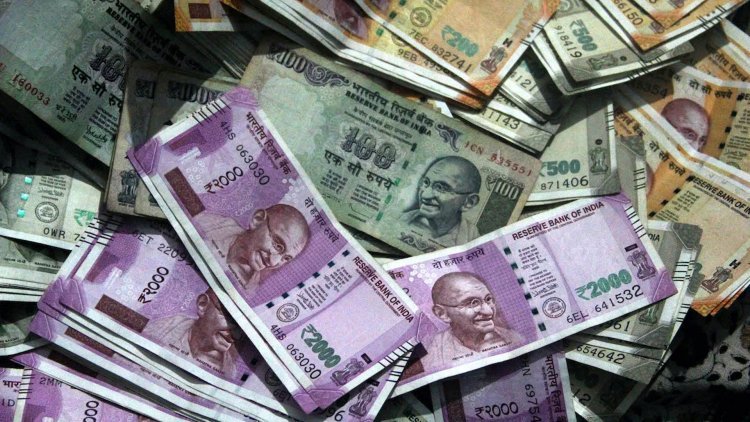RBI makes a significant move toward internationalising the currency
The guideline makes no mention of a sudden switchover from USD to INR-based invoicing. It will, at best, happen gradually. Promoting INR payments with neighbouring South Asian nations and other trading partners is a good place for policymakers to start.

The Reserve Bank of India stirred up the financial markets on July 11. It authorised Indian banks and the foreign commerce community to invoice and settle transactions in Indian rupees with a press release titled "International Trade Settlement in Indian Rupees (INR)". The policy is quite important and represents a big step in the internationalisation of the INR.
What is currency internationalisation? This indicates that the currency is widely used as a medium of exchange. Since more than a century ago, the US Dollar (USD) has remained an international currency. The United States Dollar (USD) overtook the Great Britain Pound (GBP) as the predominant world currency in the early 20th century. This stance was further solidified after World War II when all currencies were tied to the US dollar. The USD has retained the top spot even after Bretton Woods collapsed in 1971.
The US dollar's hegemony in world politics irritated many people. The USD is typically the de facto medium of exchange in most international transactions, guaranteeing that Washington always plays a significant role in international affairs. Valéry Giscard d'Estaing, France's minister of finance, referred to this as a "exorbitant privilege." In order to challenge the dominance of the USD, European leaders jointly gave up their respective currencies and created the Euro.
Typically, as an economy becomes more powerful on a global scale, its currency's share of international trade increases. But with the US, this has not been the case. The US economy's percentage in the global economy decreased from 25% to 15% over the past 50 years. Although the USD's percentage of global debt and reserves fell, at 60%, it still has a commanding position.
China's growth has coincided with the US economy's downfall. China now accounts for 20% of global output, surpassing the US's 20% share, which was 2% in the 1980s. However, the participation of the Chinese Renminbi in the world's foreign exchange reserves is still a pitiful 2%, whereas the share of the Euro has been constant since its introduction at 18-20%.
The First Deputy Managing Director of the International Monetary Fund (IMF), Gita Gopinath, and other experts have referred to this dollar hegemony as the "Dominant Currency Paradigm," which poses macroeconomic dangers. Former Bank of England Governor Mike Carney suggested that multipolar currencies are necessary in a multipolar world. He also argued for the use of digital currencies to challenge the USD's hegemony.
What role does the RBI's press release from July 11 play in the global system of currencies? India's economy now accounts for about 7% of the global economy, up from 2% in 1980. Foreign direct investment and global portfolio flows have both started to favour it as a destination. The Indian economy is predicted to develop by 6-7 percent, which is substantially more than most other nations. Additionally, the government and the RBI have opened capital and current accounts, enabling both Indians and foreigners to own assets in India. Therefore, there is undoubtedly room for the Indian economy to become more globally integrated.
The July 11 note is yet another significant step toward globalising the economy. According to the press release from the RBI, "it has been decided to put in place an additional arrangement for invoicing, payment, and settlement of exports / imports in INR in order to promote growth of global trade with emphasis on exports from India and to support the increasing interest of the global trading community in INR." This means that going forward, exporters and importers, who up until now mostly invoiced their operations in dollars, will have the option to do so in Indian rupees. Additionally, the RBI has given banks permission to offer exporters advance loans secured by Indian rupee bills.
The strategy will support the INR's emergence as a global reserve currency. In a speech in 2009, Shyamala Gopinath, a former deputy governor of the RBI, listed three reasons for currency internationalisation. First, that currency can be used to settle foreign transactions. Second, people who are residents and those who are not residents can both own and owe money in the currency that is being issued. Third, non-residents have the flexibility to maintain currency balances even outside the issuing nation's borders. A move in the direction of the first factor is the existing policy. As part of managing capital accounts, the government and RBI have been focusing on the second and third elements.
The aforementioned policy does not suggest that there will be a sudden switch from USD-based billing to INR-based invoicing. It will at best be gradual and slow. Indian officials might get started by encouraging INR payments with other trading partners and neighbouring South Asian nations. The majority of South Asian nations are currently in trouble and are asking India for financial and humanitarian assistance. Giving assistance in INR and promoting future billing in it will also be advantageous for these economies in difficulty because they won't need to use USD for payments. Despite this, a small number of South Asian economies, like Sri Lanka and Nepal, do accept payments in INR.The new arrangement should also make it easier for India to reimburse Russia for the oil that is no longer eligible for USD payments.
Despite the USD's continued dominance, early data indicates that economies are switching to alternative currencies, primarily the Chinese Renminbi. The INR might also be included in the forex reserves. A more open capital account and liberalised financial markets provide India an advantage over China and should improve the status of the INR.
Usually, there is a gap between the international political order and the international monetary order. This time, the lag has been longer than usual since the USD has maintained its dominance despite the US economy's collapse. Even while the USD will continue to dominate in the foreseeable future, it is reasonable to anticipate that its proportion will steadily decrease. Which currency will rule the global monetary system, we wonder?
Given that the political system is shifting toward a multipolar one and that multipolar currencies should follow suit, the solutions are not entirely clear. It will be interesting to see how the RBI's involvement into the monetary order arena develops in the future.




 admin
admin 




















